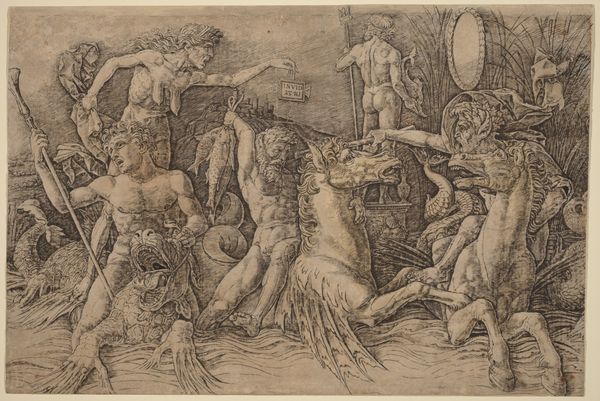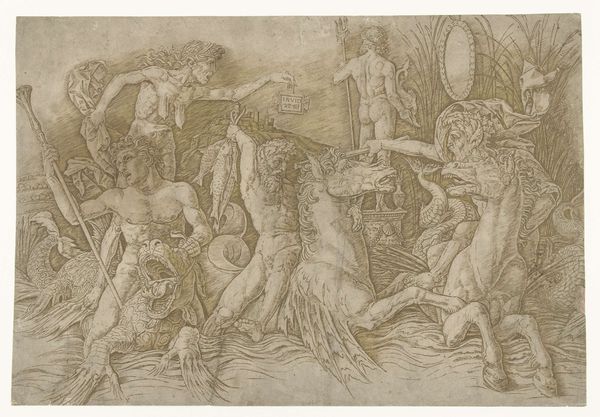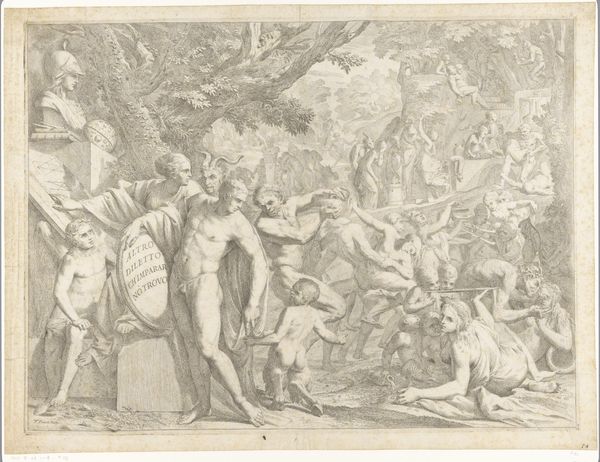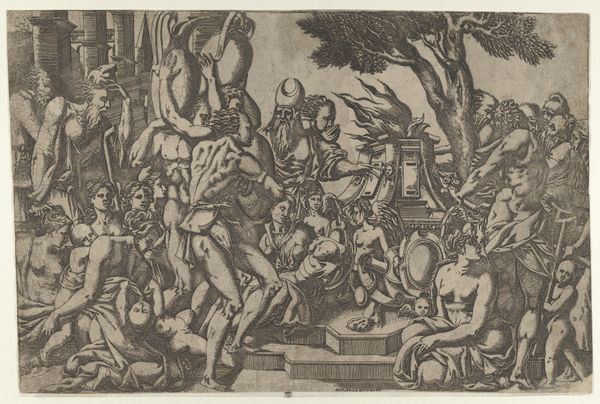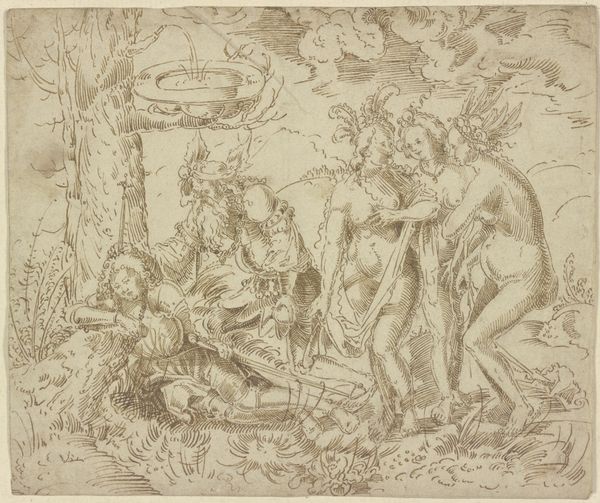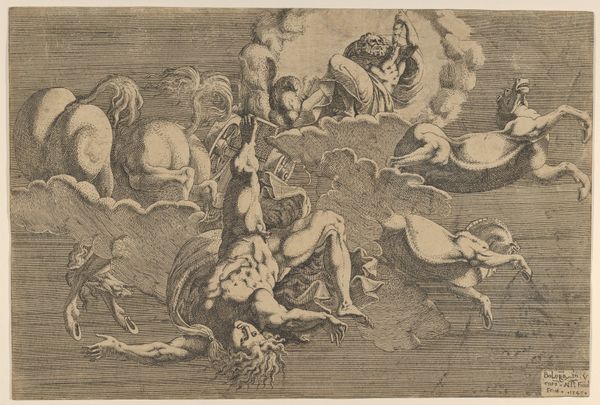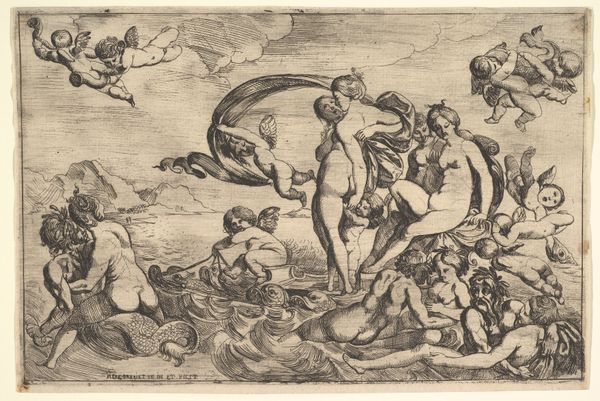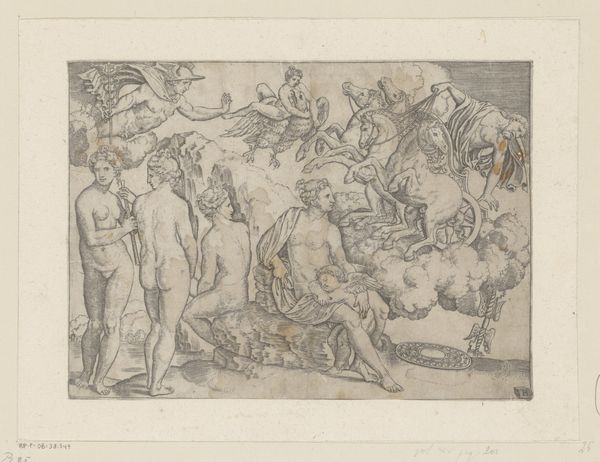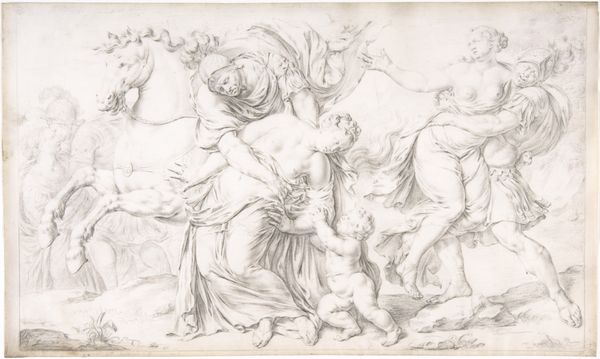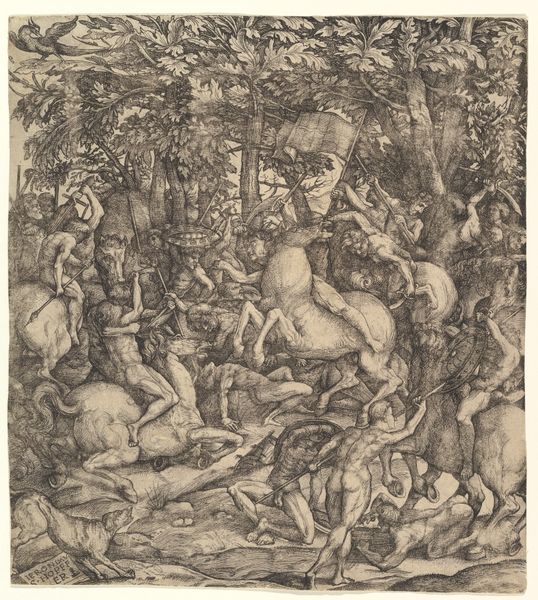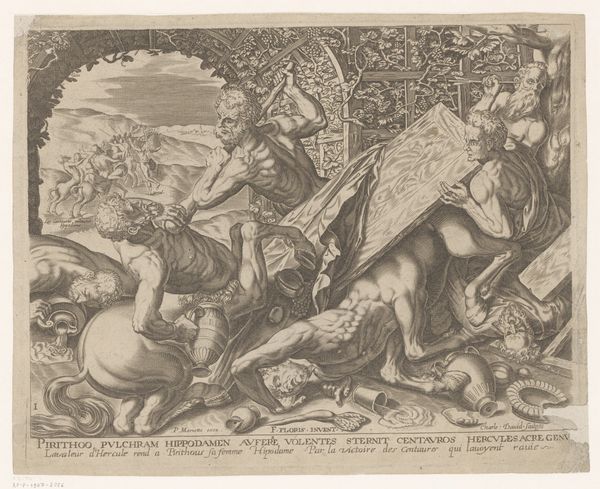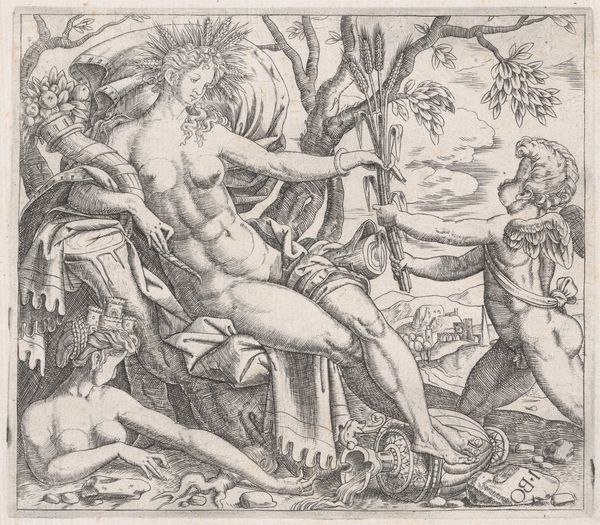![Battle of the Sea Gods [left half] by Andrea Mantegna](/_next/image?url=https%3A%2F%2Fd2w8kbdekdi1gv.cloudfront.net%2FeyJidWNrZXQiOiAiYXJ0ZXJhLWltYWdlcy1idWNrZXQiLCAia2V5IjogImFydHdvcmtzL2Q5ZTY5MDkyLTJmN2ItNDhjMC04YjcwLTY0YTJhYjQzOTI2OS9kOWU2OTA5Mi0yZjdiLTQ4YzAtOGI3MC02NGEyYWI0MzkyNjlfZnVsbC5qcGciLCAiZWRpdHMiOiB7InJlc2l6ZSI6IHsid2lkdGgiOiAxOTIwLCAiaGVpZ2h0IjogMTkyMCwgImZpdCI6ICJpbnNpZGUifX19&w=3840&q=75)
print, engraving
# print
#
figuration
#
form
#
11_renaissance
#
ancient-mediterranean
#
line
#
history-painting
#
italian-renaissance
#
engraving
Dimensions: sheet: 30.4 × 43.1 cm (11 15/16 × 16 15/16 in.)
Copyright: National Gallery of Art: CC0 1.0
Andrea Mantegna created this print, "Battle of the Sea Gods," sometime in the late 15th century, using the exacting process of engraving. He would have used a tool called a burin to carve lines directly into a copper plate, creating a design capable of producing multiple impressions. Note how the linear quality of the engraving defines the forms, from the muscular bodies of the sea gods to the fantastical creatures they ride. Mantegna was deeply interested in classical antiquity, and this print shows his fascination with its aesthetic and mythology. Engraving, though laborious, allowed Mantegna to circulate his artistic vision widely. This was crucial in an era before photography, enabling artists to disseminate their ideas and build their reputations across Europe. The very act of making prints was tied to burgeoning capitalism, as these images became valuable commodities in their own right. So, while Mantegna looked back to antiquity for his subject matter, he was very much a part of the Renaissance's new world of production and exchange.
Comments
No comments
Be the first to comment and join the conversation on the ultimate creative platform.
